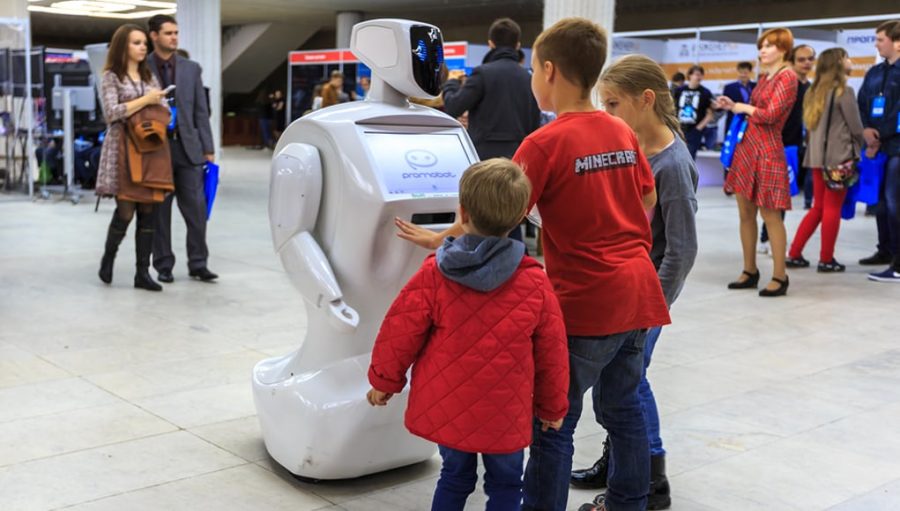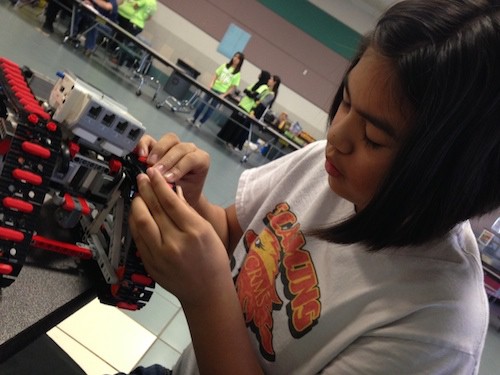Challenges, Opportunities and Actions
Artificial Intelligence creates great challenges and opportunities for powerful, equitable learning experiences. Here are a few ways you can get started.



Challenges
- Bias and Accuracy. AI is only as good as the data that is fed into the machine learning algorithms. OpenAI uses data from 2021 and earlier. It is already dated. Support services such as Education Technology equity certification (such as that from Digital Promise) will help platform builders increase equity. With a massive uptake in use, AI can also be self-referential, citing work that it has already generated. Consider an AI engine that asks millions of questions every second – and then publishes those to the web. The mere volume produced could impact the veracity of searches. As with all information we obtain via online searches, there is no guarantee of its reliability. Not everything we find online is true. Because AIChat is a language model, it will provide wrong answers at times, even though its responses appear to be accurate and authoritative, there will still be errors. As with all information we receive, we need to have the skills to sort through the information and check its validity.
- Literacy. If every learner has access to a tool such as OpenAI that can write close to perfect essays, it is not difficult to imagine that essay-writing, blog posting (such as this blog) and other human-produced writing will go the way of cursive: interesting but perhaps deemed not critical. There is no doubt that reading may remain, but perhaps basic essay constructions will be completed by AI technology and humans may be the editors, creators, and question-askers. Michael Moe at GSV describes a writing revision process using ChatGPT as a tool (rather than just to produce the final product). The challenge will be whether and how fast educators can adapt (as opposed to reducing all essay prompts to handwritten products only).
- Data privacy. As with all technologies, data privacy is paramount. If learners and educators use ChatGPT solutions, how will their input data be used beyond feeding into the data model? Schools are expressing concern about how student data is used by third parties and with technologies like this, without consent given.
- Isolation. Already technology is built to maximize use. Research suggests that users have more access but feel more isolated. If the power of human relationships is paramount, AI “friends” may increase isolation, social anxiety and mental health challenges. With the use of AIChat, users will instead collaborate with AI, rather than build interpersonal and SEL skills that are necessary for workplace success. Will AIChat be a suitable and comparable alternative to human connections?
- Ownership. If AI generates code for a computer science class, essays for an English class, and art for an art class, who owns the work? What if a student modifies it slightly? Will new solutions (whether a problem set or an invention) always be AI aided? Educators will worry about detecting plagiarism, but it may get better at being undetectable (but not impossible). There is no doubt that over the last two weeks students have submitted AI-generated solutions to assessment prompts. So, we either regress to handwriting and cursive to prove authenticity, or embrace new tools that make the process and product for every learner.
- Influence. Given the non-sentient, but very confident nature of AI tools (such as Chat GPT), students (and all humans) will be susceptible to convincing AI responses that are intentionally built on biased, intentionally discriminatory or incorrect data sets to serve non-altruistic purposes. Teaching young people to critically discern, test, evaluate and check responses will be important – and as we know from today’s media influence, extraordinarily difficult to achieve.
Opportunities
- Personalized. Personalized learning, where every student gets what they need, how they need it, and when they need it, increases chances of long-term success (i.e. family-sustaining wage, contributing citizenship, positive mental health). ChatGPT, can suggest next steps to any learning challenge at multiple levels of complexity. For example, if a student does not understand derivatives in Calculus, a simple search for “Explain derivatives using everyday terms” or “Provide step-by-step processes for solving derivative calculations” can instantly support a student where they are. As AI becomes more sophisticated, this can be in multiple modalities and media formats. The demand and evidence in support for 1:1 tutoring have risen dramatically to account for Covid losses and learning gaps. Personalized AI Tutors can address this issue.
- Access. Hundreds of millions of learners of all ages do not have access to quality education. Sophisticated AI tutors, built into simple and affordable platforms, can solve this challenge for those who have access to mobile devices. For example, students can ask for clarification on a concept they are studying and receive immediate responses via an AI tutor. Access to immediate support will help to limit and hopefully eliminate lost learning opportunities.
- Purpose. Through more efficiency in the learning process, and more personalization, more energy in learning spaces can be focused on purpose-driven work connected to complex and unpredictable challenges such as those described in Global Goals for Sustainable Development.
- Assessment. If you feed a piece of writing into ChatGPT and ask it to make recommendations for improvement, it will respond accordingly and then continue to guide the user through the revision process. Imagine formative assessment completed by ChatGPT and the time it would save educators to focus on relationships and create high engagement learning. ChatGPT can create rubrics when prompted appropriately, and then improve on these rubrics with continued questions.
- Wellness and Support. The need for social-emotional and mental health support for young people is at an all-time high. Just as 1:1 academic tutoring matters, so does the availability of counselors and mentors. ChatGPT, especially when combined with AR/VR technology, may serve as the front-line counselor for those who need it the most. The rise in smart tools and smart monitoring (tools like MUSE and other wearables) will continue to improve and have a more dramatic role in shaping decisions and healthy habits.
- Career and Learning Guidance. Additionally, the use of ChatGPT could provide students with immediate access to resources for career and college planning, for seeking advice and other benefits that can come from having access to a counselor – especially given the overwhelming student numbers assigned to most school counselors.
- Learning Design. Innovative learning experiences can take significant time (think high-quality project-based learning) to design. AI can address that challenge. Nolej, a newly launched AI platform available for beta in early 2023, can generate complete and sophisticated learning modules when fed a text, video or other media source on a topic. These modules contain tasks, assessments and eventually, AI-generated assessments to support learner growth. Future-oriented learning organizations like Sora Schools have an internal research team investigating the use of Large Language Models like ChatGPT in education. CEO Garrett Smiley says, “This has the potential to change everything. It could become a teacher’s best friend and help students create even high-quality projects. But, time will tell if that potential comes to fruition. There are still a lot of open questions.” As Seth Godin stated, “Technology begins by making old work easier, but then it requires that new work be better.”
- Coaching. Every educator (and possibly every human being) can benefit from a great coach. AIChat could provide that for teachers. Building on the solution introduced by Edthena last year, personalized coaching could be readily available for every educator. When schools lack coaches to support teachers, relying on virtual coaches helps all educators to receive feedback, to interact with a coach and build professional skills in an authentic way.
- Virtual Assistant. AIChat could act as a virtual research assistant for educators as they explore new content for courses, saving time in searching through Google and other resources. Asking AIChat to draft a lesson plan, write letters, and other communications could enable educators to redirect the time spent on these tasks toward students when AIChat is used for clerical tasks.
- Adaptive. AIChat can adjust its response and information provided as it learns more from its interactions with the user. By analyzing the questions and ongoing conversations with the user, it then analyzes the data received to provide more personalized interactions that meet the specific needs and pace of each learner. This may also support learning differences by personalizing engagement by interacting with students through conversation, providing simple or complex explanations based on student needs, and chunking information and adapting learning based on a student’s input (such as explaining in more simple or more complex terms).
- Expression. Generative AI and AI as a copilot to design, iteration and creation just increased exponentially. This will be the first wave of many. The ability to produce and publish high-quality art, music, text, video and immersive media experiences is now readily available to anyone with these tools.
- Entrepreneurship. Young people around the world have a new level of access to starting businesses and reaching a global audience. New technology enables support, design and growth at never before seen rates.
Actions
Education leaders need to consider these possible futures now. There is no doubt that K-12 and higher ed learners will be using these tools immediately. It is not a question of preventing “AI plagiarism” (if such a thing could exist), but a question of how to modify teaching to take advantage of these new tools.
- Test drive AI platforms like ChatGPT and the sandbox from OpenAI.
- Have your students and/or teachers do the same. Try entering prompts and then analyzing the quality, accuracy and variability of the responses. Rapidly increase comfort level.
- Build learning around these tools and evaluate the outcome.
Rethink assessments and the tasks you are asking students to do, they can already plagiarize and find all answers, but now, they don’t even have to paraphrase. Begin now to imagine learning with this context.

